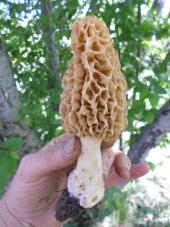Angelika Maier wrote:What you did was planting mushrooms you found in the forest? Which ones?
Apparently, shiitake grows on gum trees too, but I didn't try it so far.
I don't know were oyster mushroom grows, but I still have a bit of time left until I have got sufficient mycellium.
Maybe I have to grow it first in grain before I can plant it out.
well i will go out on a limb here and admit i was mostly doing this with azurescens, and cyanescens!
thats how i first got into mushrooms many years ago, i used to travel the west coast loop quite frequently (north to washington up to BC, back down to northern cal) and would collect them and spread them down here to northern california beach areas, and places close to the water. unfortunately i forgot exactly where i put most of the patches! or it all looked different when i went back and couldnt find where i made my small patches.
ahhhh but i did find a couple and they still had mycellium, no mushrooms...but havent been out to look at those areas in a long time. some of them were at the place where i used to live, and same- saw lots of mycellium years later, so maybe they fruited eventually.
now i only try to grow edibles. i have done this with other kinds of local mushrooms, oysters too, and then put them in straw. once they got well into the straw i put them in the garden ...and kept waiting each year hoping they would come up...and only this year saw my first on a willow log that bordered one of the garden beds, one of the many place i put them under the gardens....
it takes quite a while for them to get going, and i think i could certainly be more precise and particular about it, but i was going for the lazy style like i often do. i think i might have got some contamination with other mushrooms, which wasnt a big deal to me really, because one of the spots i put the mycellium i ended up with a lot of some kind of agaricus, a local mushroom. theres soooo many wild mushrooms here, and especially up north in washington where i used to live.
once you get the mycellium going good and move it to where you want it -sometimes it doesnt make it, that seems to be the tricky part of the lazy easy way.
thats where it helps to plan it out good, and know what kind of mushroom likes what kind of tree, will work on a living tree, newly cut logs, alder chips are what i usually used, or whatever other kinds of wood chips, straw or whatever other fancier methods.
just recently i was talking with friend who grows mushroom the more technical ways....and i was wondering if chanterelles could be gotten this way. i think it will only work with some mushrooms??? my friend seem to think the chanterelles would nt work this way, and that they are hard to get going, i dont know...though...from what i read you would have to innoculate a living tree, and they are very particular. he explained why but i didnt completely get it, but i gathered they are fussy.
shitake as well, is harder to get going than some others and is particular about the wood. i am certainly not an expert on this, but i just try things out, and especially like the easy way, though you will maybe not have as much sucess.
as far as i know oysters are particularly easy and will grow on almost anything.
here a pic, growing in the strawberry garden on willow:














 1
1





























